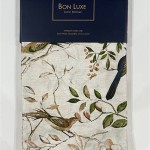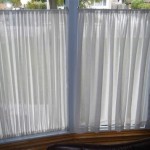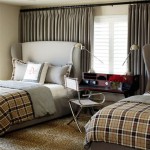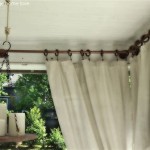Basement Curtains for Small Windows: Maximizing Light and Privacy
Basements, often relegated to storage or utility spaces, are increasingly being transformed into living areas. This transformation necessitates addressing common challenges, including limited natural light and the need for privacy. Small basement windows, a common architectural feature, present a unique set of considerations when selecting window treatments. Curtains, when chosen strategically, can significantly enhance the functionality and aesthetics of these small windows, optimizing both light infiltration and privacy control.
Selecting the appropriate curtains for small basement windows requires careful evaluation of several factors. These include the amount of natural light available, the desired level of privacy, the overall aesthetic of the basement space, and the potential for moisture and temperature fluctuations in the basement environment. Understanding these variables is crucial for making informed decisions that will result in a functional and visually appealing window treatment solution.
Key Point 1: Light Enhancement Strategies
One of the primary challenges associated with small basement windows is the limited amount of natural light they provide. Maximizing the available light is essential for creating a more inviting and comfortable basement environment. Certain types of curtains are specifically designed to enhance light transmission and diffusion.
Sheer curtains, for instance, are an excellent choice for maximizing light. These lightweight fabrics allow a significant amount of light to filter through, creating a bright and airy ambiance. While they do not offer complete privacy, they provide a degree of diffusion that softens harsh sunlight and reduces glare. Sheer curtains are particularly effective when combined with other window treatments, such as blinds or shades, for layered control over light and privacy.
Another effective strategy is to choose curtains in light and reflective colors. White, cream, and other pale hues will reflect light back into the room, making the space feel brighter and more open. Avoid dark or heavily patterned curtains, as these will absorb light and may make the basement feel darker and more confined.
The texture of the curtain fabric also plays a role in light diffusion. Fabrics with a slightly textured surface, such as linen or voile, can scatter light more effectively than smooth, opaque fabrics. This creates a softer, more ambient light that is less likely to cause glare or harsh shadows. Furthermore, consider the placement of the curtain rod. Hanging the curtains slightly above the window frame can create the illusion of a larger window, allowing more light to enter the space.
Consider utilizing tie-backs or decorative hardware to keep curtains pulled away from the window during daylight hours. This will ensure that the maximum amount of natural light can enter the basement. Carefully consider the hardware finish, opting for lighter, reflective metals like brushed nickel or chrome to further enhance light diffusion in the room.
Key Point 2: Privacy Considerations and Options
While maximizing light is important, maintaining privacy is often a paramount concern, especially in basements that are used as living spaces. The level of privacy required will depend on the location of the window and the intended use of the basement space. Different curtain types offer varying degrees of privacy control.
For complete privacy, blackout curtains are an excellent choice. These curtains are made from opaque fabrics that block out virtually all light. They are ideal for basements that are used as bedrooms or home theaters, where darkness is desired. Blackout curtains also provide excellent insulation, helping to regulate temperature and reduce energy costs.
If complete darkness is not required, consider using lined curtains. Lined curtains consist of two layers of fabric: a decorative outer layer and a lining layer. The lining layer provides added privacy and insulation without completely blocking out all light. Lined curtains are available in a wide range of fabrics and colors, allowing for a variety of aesthetic options.
Another option for balancing light and privacy is to use layered window treatments. This involves combining two or more different types of curtains or blinds. For example, you could use sheer curtains for daytime privacy and light diffusion, and then add blackout curtains or blinds for nighttime privacy. This approach provides maximum flexibility and control over both light and privacy.
Consider the height of the basement window relative to ground level. Windows at or near ground level will require greater privacy considerations. Decorative window film can be applied directly to the glass to obscure the view without blocking out light. These films are available in a variety of patterns and opacities, offering a customizable solution for privacy control.
When selecting curtains for privacy, pay attention to the fabric’s weave and density. Tightly woven fabrics provide greater privacy than loosely woven fabrics. Hold the fabric up to a light source to assess its opacity. If you can see through the fabric, it will not provide adequate privacy.
Key Point 3: Addressing Basement Environmental Factors
Basements are often prone to moisture and temperature fluctuations, which can impact the longevity and performance of curtains. Selecting materials that are resistant to these environmental factors is crucial for ensuring that your curtains remain in good condition and continue to function effectively.
Avoid using natural fibers like cotton or silk in basement environments, as these are susceptible to mold and mildew. Instead, opt for synthetic fabrics like polyester or nylon, which are more resistant to moisture. These fabrics are also less likely to fade or shrink in response to temperature changes.
Consider using antimicrobial or mildew-resistant curtains. These curtains are treated with a special coating that inhibits the growth of mold and mildew. They are particularly well-suited for basements with high humidity levels.
Regularly inspect your basement curtains for signs of moisture damage, such as discoloration or musty odors. If you detect any moisture damage, clean the curtains promptly to prevent the growth of mold and mildew. Follow the manufacturer's instructions for cleaning and caring for your curtains.
Ensure proper ventilation in the basement to minimize humidity levels. This can be achieved by using a dehumidifier or by opening windows and doors when weather permits. Proper ventilation will help to prevent moisture from accumulating on your curtains and other surfaces in the basement.
Consider using curtains that are easy to remove and clean. This will allow you to launder or dry clean them regularly, removing dust, dirt, and allergens. Regular cleaning will also help to prevent the buildup of mold and mildew.
The selection of curtain hardware is also important in the basement environment. Opt for hardware made from rust-resistant materials like stainless steel or aluminum. This will prevent the hardware from corroding or staining the curtains.
Ultimately, choosing curtains for small basement windows requires a multi-faceted approach, considering various factors to create an optimal balance of light, privacy, and durability. By carefully evaluating the environmental conditions, prioritizing light enhancement techniques, and selecting appropriate levels of privacy control, homeowners can effectively transform their basements into comfortable and functional living spaces.

Basement Window Curtains Tips Ideas The Shade

4 Tips To Successfully Decorating Basement Windows

71 Window Treatments Basements Ideas Basement Windows Finishing Remodeling

Basement Window Curtains Ideas Tips Spiffy Spools

Basement Window Curtains Ideas Tips Spiffy Spools

10 Ideas For Basement Window Coverings With Sources Rambling Renovators

Basement Window Curtains Ideas Tips Spiffy Spools

Diy Window Covering For Awkward Windows

Pin Page

Basement Window Curtains Ideas Tips Spiffy Spools








